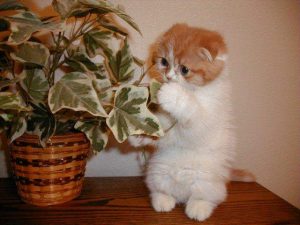 The eating of non-food items could indicate a medical problem so it is important to consult with your veterinarian as a first step in addressing the problem.
The eating of non-food items could indicate a medical problem so it is important to consult with your veterinarian as a first step in addressing the problem.
Behaviorists don’t understand why some animals will eat non-food items and others do not. Wool, wood items and plastic products are often favorite targets for cats. These behaviors seem to be more common in Siamese cats and related breeds.
Some items that your pet ingests can create life-threatening intestinal blockages, so your pet’s life may depend on stopping this behavior. The technical term for this behavior is pica – eating things that aren’t food.
Pet-proof your house if possible, so that your cat can’t get hold of the things he likes to chew and eat. If you can’t keep him away from the items, use products available at pet stores that make them taste bad, Find other things to keep your cat occupied so she isn’t looking for things to chew on, including growing some indoor kitty grasses for her. For more great ideas on how to provide enriching toys and environments for your cat, see our program Helping Kitty Be Good.
If these suggestions don’t work, and especially if the pica is causing life-threatening blockages, consider consulting with your veterinarian and/or an experienced and knowledgeable certified or applied veterinary behaviorist or behavior consultant because of the seriousness of the situation. Through a combination of environmental management, medications prescribed by your veterinarian and the appropriate use of aversive consequences, it may be possible to stop the behavior.